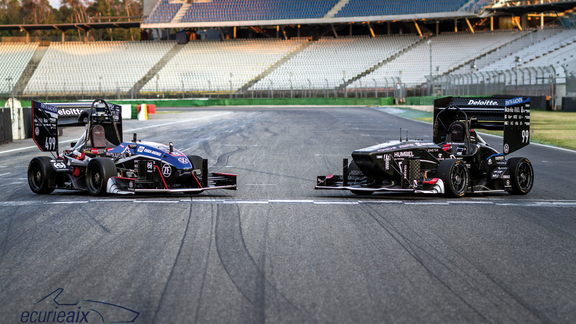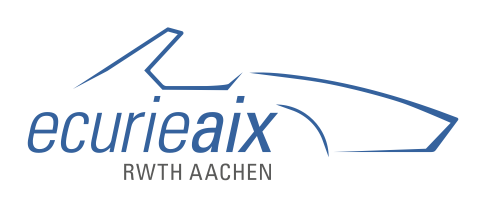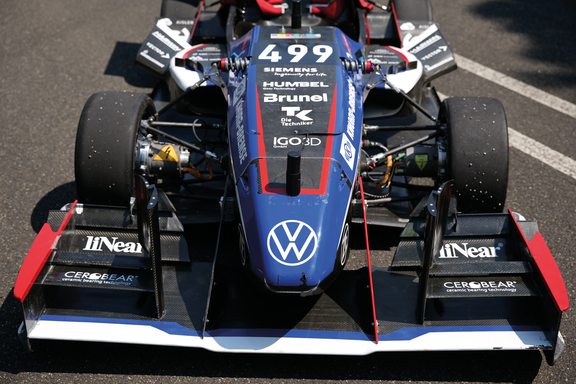
Every year, the RWTH Aachen Formula Student Team competes with teams from all over the world. In the largest design competition for students, the participants plan, construct, and manufacture their own vehicles anew each season. Ecurie Aix was founded in 1999 as the second German Formula Student team. The first vehicle, the eac01, was launched in 2002. In 2014, the team decided on a significant change of direction. In the future, only vehicles with electric drive are to be built, and the development of an autonomous vehicle is being pursued. In 2017, the team’s first autonomous electric racing car was brought to the racetrack.
New challende: a car that can do both
The new challenge for the 2021/22 season is that there will only be one Ecurie Aix vehicle that can be driven by a driver and can also complete the racetrack autonomously. Therefore, the technical challenge lies in cleverly integrating additional components into the vehicle concept. For this purpose, many components had to be redesigned and constructed. For example, the new Lidar sensor that supports autonomous driving had to be newly integrated. Furthermore, a new CarPC reduces the weight and performance is thus improved. This gives hope for repeated success this summer. Especially due to the past season, in which the team was able to take home the overall victory at the FS Austria, among other things, hopes are high for the coming months. The goal is for the vehicle to be faster when driving autonomously than with a race driver in some disciplines.
Race schedule
The Formula Student events consist of several disciplines. The competition is divided into eight areas, three of which are static and five are dynamic. Static disciplines include administrative and economic tasks such as creating business plans and cost reports. Thus, in the dynamic task section, the focus is on the vehicle. The performance of the vehicles is tested in categories such as cornering dynamics and acceleration. The competition disciplines "Autocross" and "Endurance" are very close to qualifying and classic racing from Formula 1.
Usually, the events last five days and are similar in their schedule. The first day consists mainly of organizational activities, such as arrival and setting up the camp on site. The following day, the site is entered for the first time in the early morning hours. The first step is the technical inspection of the vehicle to be able to take part in the competitions. The racing cars are checked for conformity with regulations and safety aspects, which are important prerequisites for participation in the dynamic disciplines. While the vehicle is being checked, the static disciplines usually start.
On day three, all technical inspections are usually completed, and the vehicle can be set up for the dynamic disciplines to begin the most exciting part of the race weekend. Day four and five are all about racing, where the teams can compete against each other in the various disciplines
At FS Austria last year, the team achieved outstanding results on the first race day with no less than three of the disciplines. However, the results from the static disciplines turned out to be sobering and so they entered the decisive discipline "Endurance" with a lot of excitement on the last day.

The team once again got everything out of its vehicle, taking first place in this discipline in the end and thus claiming overall victory in Austria.
Outlook 2022
The team is working hard to repeat and even surpass last year's results. The main focus will be on the FS Germany from August 15 to 21 in Hockenheim, which is certainly one of the most prestigious events in Formula Student. The team is also already qualified for the FSEast in Hungary and the FSA in Austria. In May, the team will present the new car to the public. LINEAR wishes a lot of success and is looking forward to many more exciting moments in this racing series.
Yannik Schüler, Gregor Meurers
